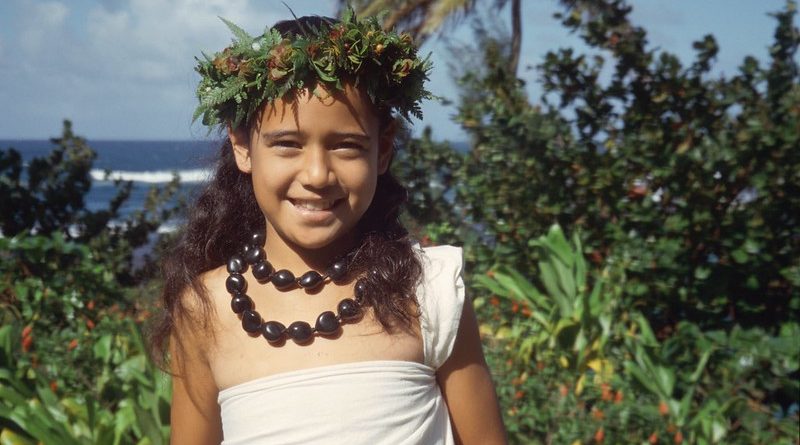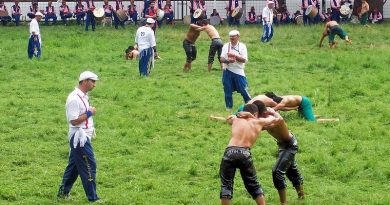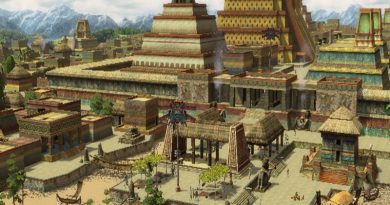A Short History of Hawaii
The first Hawaiians
The Polynesians, who had already colonized Tahiti and the Marquesas Islands in the first century AD, settled in Hawai’i around 300 AD. They brought with them a distinctively tribal, yet a spiritually advanced culture with a sophisticated farming system. Each canoe that had successfully completed the 3,000 miles sea voyage brought around 100 passengers with them, men and women, plus crops from the Tahitian Islands and domesticated animals. 19th century recordings of Hawaiian oral tradition reports that Hawai’i must have appealed greatly to the new landowners due to the fertile soil; so much indeed that a two-way voyaging commenced after the original settlement of Hawai’i.
There were other motives of course: marriages, burials in the homeland, family clan quarrels, or famine and floods. During the 12th and 13th century, a new wave of settlers apparently came from Tahiti and invaded the islands, establishing a new class system. Archaeological evidence suggests that by the 14th century, sea voyaging had ceased, but that the islands experienced an expansion in population and food production, indicating that they must have perfected their skills of farming and resource management.
The new class system that was established should manage the Hawaiian indigenous population until the arrival of Westerners. In this kapu system, originating from the Tahitian word tapu (today: taboo), ali’I (chiefs) oversaw the maka’ainana (commoners). These chiefs were supported by a number of priests, healers and astrologers; the division of territory was strict, and each territory had its own mo’i (king). A Tahitian priest named Pa’ao was the most influential leader surrounding the kings and created a line of high priests; to consolidate his power, he brought in other chiefs from Samoa, among them one called Pili. Commoners consisted of craftsmen, fishermen and artists, including the Hula dancers. The tribe also had its own slaves, also called kauwa maoli, who were marked by tattoos on their foreheads and regularly ended up being human sacrifice in temples by the priestly kahuna, in temples built by Hawaiian chiefs to initiate war.
Hawaiian kings were adorned with feather cloaks so rich and so exquisite that Captain Cook and his lieutenant described them as magnificent as a royal robe from a European nation. A chief’s feather cloak could easily consist of 450,000 feathers for which an estimated 80,000 birds would be stripped of their feathers by a specially selected group of royal feather-pluckers; luckily for the birds, most of them walked free once the desired feathers had been removed. In ancient Hawaiian society wars were frequent, as clans from the different islands battled each other or experienced internal turmoil. Periodic and courtly sham battles were held between friendly chiefs to keep young warriors prepped and alert.
The Hawaiian Kings
Enter King Kamehameha (“the lonely one”) at the end of the 18th century, an ambitious chief from the Big Island, who traced his ancestry back to the powerful Pili. Formidably skilled as a warrior, and quite the shrewd opportunist, he began to systematically conquer the islands, never shying away from bloodshed. In 1790, he ended up sacrificing his Hawaiian rival on the altar of a war temple; in 1795, he stormed Maui and send shock waves through the local tribe with a cannon plundered from an American ship. When he couldn’t conquer Kauai, he invited their chief to Oahu and forced him to surrender his island through a mixture of rewards and threats. After centuries of battles, Hawaii became a unified kingdom in 1809.
King Kamehameha is the most revered figure in the Hawaiian Kingdom, a larger than life kind of persona who appeared regularly in the logbooks and diaries of visiting ship captains and merchants at the time. He observed the old kapu system and simultaneously engaged in Western style trade and merchandise, which he had learned from European ships he supplied with provisions. He is solely responsible for sandalwood going extinct on the islands, which he exported in a lucrative deal to Asia until there was no sandalwood left on Hawaii.
Kamehameha died in 1819 after a long illness and because of his powerful spirit, which no one should ever lay hands on, his bones were hidden in a still secret location on the Kona Coast of the Big Island. His son and successor, King Kamehameha II, didn’t easily fill the void he left. He abolished the kapu system by a ritual act of sitting down to a meal with his mother and his wife, a violation of kapu that sent shock waves through the tribe as sharing a meal of men and women together had been strictly prohibited. The abolition of kapu left the Hawaiians in a strange void.
The Missionaries
This would soon be filled by the message of Christianity though that the missionaries brought from America. The King who successfully bankrupted the monarchy within a very short span of time, travelled to England with his wife and shortly after died there of measles. Meanwhile his mother, Queen Ka’ahumanu, the favourite of Kamehameha’s wives and a powerful and intelligent woman, engineered the peaceful transition of the kingdom into Christianity, as Kamehameha II’s death had left his only 11-year-old brother to rule and thus practically without a King.
The American missionaries seemed to be more interested in conducting business than practicing religion. They began to experiment with agricultural businesses, particularly sugar. King Kamehameha III developed a constitution in 1840 and then made a big land reform in 1848, releasing millions of acres for sale to private owners – needless to say, clever Western planters were the first in line, and the plantation boom began. Native Hawaiians, too crippled by the sudden change and plagued by diseases, became a defeated minority, as soon foreign workers from South-east Asian began to arrive- Chinese, Koreans, Filippinos, and Japanese. By 1900, over half of the population of Hawaii was of Japanese origin, as many had brought with them wives and children and began assimilating into the island life.
The influence of the monarchy dwindled rapidly in the second half of the 19th century, though a succession of short-lived successors of King Kamehameha III did what they could to protect the native population. King Kamehameha V issued a new constitution in 1864, protected the rights of laborers and introduced tariffs on sugar. He had refused to uphold the constitution of 1852, which he believed to have weakened the monarchy against the non-royalists and businessmen from the mainland. The last in line of the Kamehamehas, he left no heir and named no successor. His successor, William Lunalilo, was elected by the legislative assembly, but died just a year later of a drinking problem.
The Plantation Economy
By 1873, plantation farmers and planters had begun talking of an annexation to the US. In 1874, David Kalakaua took the throne and initiated a last attempt to revive the monarchy, promoting ancient spiritual practices, building a temple and planning a Polynesian Empire with Hawaii as the capital. His ancestors had been High Chiefs on Hawaii Island, and he ruled with a spirit and style that brought him the nickname “the Merrie Monarch”. He built the magnificent Iolani Palace, was the first monarch to circumnavigate the globe, presented grand balls and old Hawaiian feasts, always concerned about the disappearing Hawaiian traditions and spiritual practices. But the planter lobby would come in his way.
In 1887, a league of planters forced him to sign the Bayonet Constitution, which limited his own monarchy, and shifted power to land-owning and predominantly white minority. In 1891, he left Hawaii for California to seek help for his failing health and asked his sister Lili’uokalani to take the reigns in his absence. When his sister Lili’uokalani took the throne in 1891, it was only two years into her reign that she was run over by the “Committee of Safety” and illegal American troops.
She and the royal family in Iolani Palace were overthrown in 1893. President Cleveland first refused to annex the kingdom and demanded the queen by restored, yet the self-proclaimed government refused. His successor William McKinley annexed Hawaii in 1898 and it officially became US territory in 1900.
For a long time afterwards until after WW2, Hawaii would be run by an oligarchy of white republicans who ran all aspects of life on the islands through their positions as directors of agribusiness companies .




